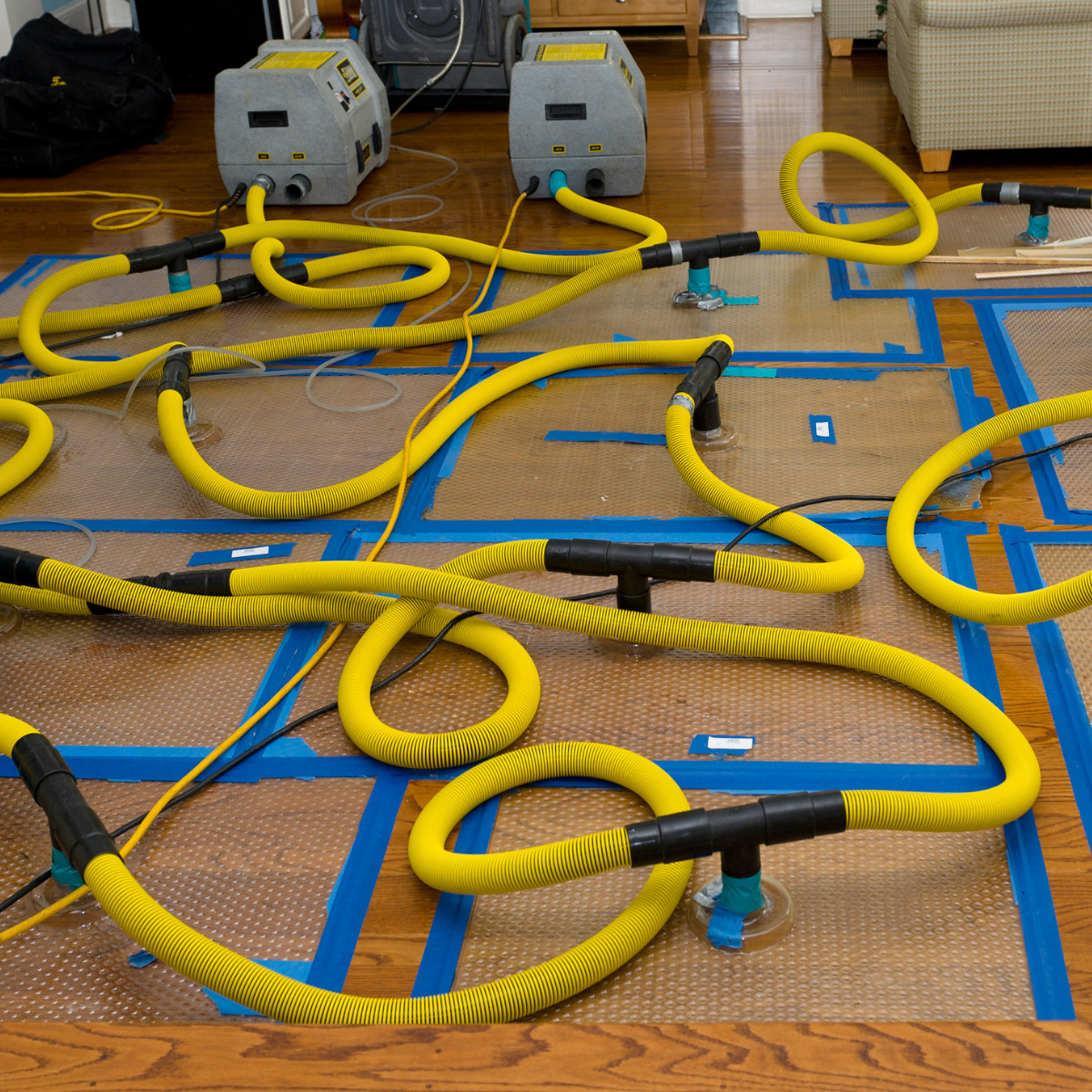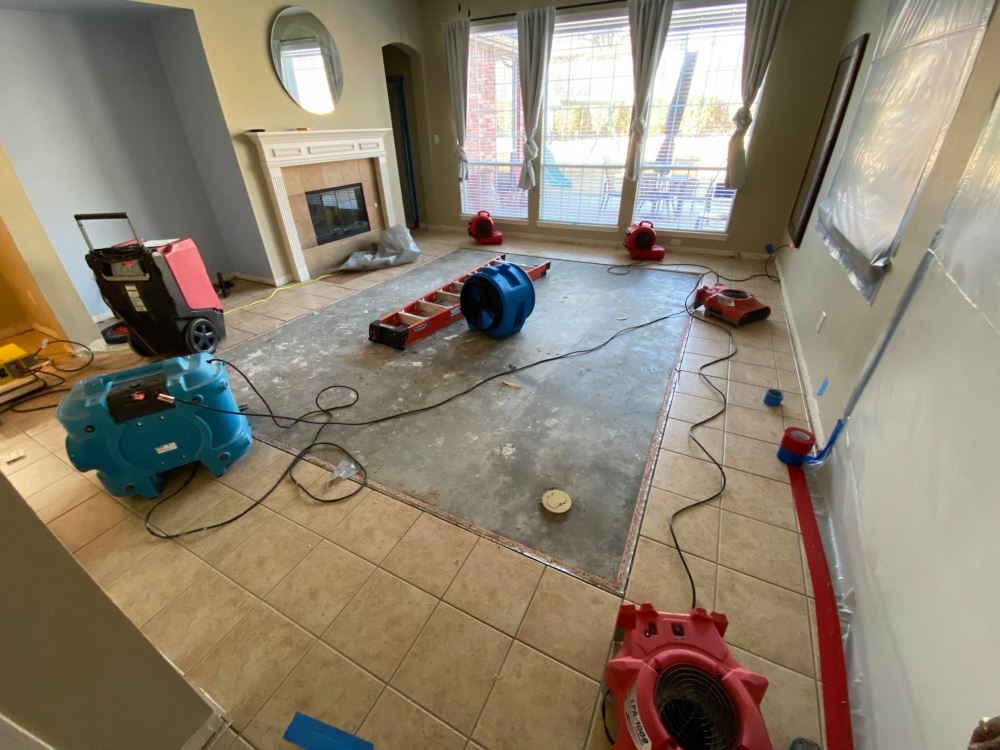Water Damage Restoration 101: Understanding the Process and Cost
Water damage can strike unexpectedly, leaving house owners in a state of complication. Comprehending the reconstruction procedure is necessary for effective recuperation. From assessing the damage to picking the ideal company, each action affects the general end result and cost. Aspects such as the kind of water damage and urgency also play a significant function. What are the particular strategies made use of in remediation, and exactly how can one plan for possible expenditures?
Kinds Of Water Damage
Initial Assessment and Inspection

Water Extraction Techniques
Complying with the first analysis, effective water extraction strategies are employed to alleviate damage and stop further issues. These techniques entail using specific equipment such as completely submersible pumps and industrial-grade vacuums - Water Damage Restoration. The selection of approach depends upon the volume of water present and the sort of products influenced. For standing water, completely submersible pumps are commonly made use of for fast removal, while vacuum cleaners are ideal for removing water from rugs and upholstery. In addition, advanced methods like water removal floor coverings may be used for hard-to-reach areas - Water Damage Restoration. The objective is to eliminate as much water as possible, reducing the possibility for mold growth and architectural damage. Prompt and reliable water removal is vital in the general water damage repair procedure
Drying Out and Dehumidification Process
As soon as the water removal is total, the drying and dehumidification process comes to be vital to restoring the afflicted location. This phase generally utilizes industrial-grade dehumidifiers and air movers to properly minimize dampness degrees. The dehumidifiers pull in wet air, eliminating excess moisture, while air movers distribute air to accelerate evaporation. Surveillance equipment is commonly utilized to track humidity and temperature degrees, making certain excellent drying problems. The period of this process can vary depending on the extent of the water damage and ecological aspects. It is essential to extensively dry all influenced products, consisting of walls, floor covering, and home furnishings, to prevent mold growth and architectural damage. Proper execution of this action is vital for an effective reconstruction outcome.
Cleaning and Sanitizing Afflicted Areas
As soon as the drying out procedure is full, a comprehensive preliminary assessment and assessment of impacted locations is crucial to determine contamination degrees. Effective cleansing techniques and ideal products have to then be used to eliminate particles and discolorations. Ultimately, sanitization and disinfection techniques are vital to assure that hazardous virus are removed, restoring the room to a risk-free condition
Initial Analysis and Inspection
Before see this site beginning any type of repair efforts, a comprehensive initial analysis and examination of the influenced areas are essential for efficient cleaning and disinfecting. This process includes recognizing the extent of water damage, identifying the resource of the water invasion, and reviewing the products influenced. Inspectors usually try to find indicators of mold and mildew development, structural honesty issues, and harmed personal belongings. The evaluation also consists of examining wetness degrees using specific devices to assure no surprise water pockets remain, as these can cause further issues. Recording the findings is necessary for planning the next action in the restoration process. An in-depth initial evaluation makes it possible for remediation specialists to create a targeted technique for reliable cleansing and disinfecting, eventually decreasing damage and health risks.
Cleaning Techniques and Products
Efficient cleansing and disinfecting of water-damaged locations require a range of products and methods customized to the certain products influenced. For porous surfaces like drywall and carpeting, extraction techniques are vital to get rid of excess dampness, followed by deep cleaning with specialized detergents. Non-porous products such as tile or metal can be cleaned up utilizing commercial-grade cleansers that successfully get rid of impurities. Vapor cleaning is one more effective method, particularly for carpetings and furniture, as it utilizes heats to remove microorganisms and mold and mildew (Flood Cleanup Services). Additionally, eco-friendly items are increasingly prominent for their safety and security and efficiency - Mold Remediation After Water Damage. Inevitably, choosing the proper cleaning approaches and products not just ensures instant tidiness however likewise aids in stopping additional damage and carcinogen connected with water intrusion
Sanitization and Disinfection Approaches
When dealing with water damage, proper sanitization and sanitation techniques are necessary to ensure the safety and security and health of the afflicted environment. After preliminary cleansing, surface areas should be treated with appropriate disinfectants to get rid of virus, mold, and germs that grow in damp problems. Usual methods include the usage of EPA-approved chemical anti-bacterials, which can be used through splashing or cleaning strategies. Additionally, ultraviolet (UV) light systems can successfully sterilize locations by neutralizing microorganisms without extreme chemicals. The choice of technique often depends upon the sort of materials impacted and the level of contamination. Inevitably, detailed sanitization not only restores a secure space however also helps stop future health dangers connected with remaining dampness and mold growth.

Fixings and Restoration Options
Assessing the damage caused by water direct exposure is important for figuring out the proper fixings and restoration options. Property owners may deal with different problems, including damaged drywall, distorted floor covering, and endangered architectural elements. Depending on the degree of the damage, repair services might entail changing areas of drywall, setting up brand-new floor covering, or enhancing architectural light beams. In situations of serious damage, full substitute of affected products could be required. Additionally, specialist conservators frequently recommend using moisture meters to evaluate covert moisture levels before selecting the finest strategy. It is essential to act quickly to avoid mold growth and more damage. Selecting the right alternatives not only restores the home but additionally assures long-lasting security and functionality.
Factors Affecting Restoration Expenses

The level of water damage directly influences the restoration costs house owners can anticipate to incur. Variables such as the source of the water, the duration of direct exposure, and the affected products greatly influence prices. As an example, clean water damage from a damaged pipe is typically less expensive to restore contrasted to damage created by sewage. In addition, the level of contamination determines the need for specialized cleansing and disposal solutions, additionally boosting costs. Geographic place additionally contributes, as local labor prices and schedule of restoration services can vary. Lastly, the necessity of the feedback influences prices; quicker treatments usually cause lower general costs by preventing more damage. Comprehending these aspects is vital for homeowners when estimating reconstruction prices.
The 3 key kinds of water damage are classified based on contamination levels: clean water, gray water, and black water. A thorough initial evaluation and assessment are important steps in the water damage reconstruction process. For standing water, completely submersible pumps are typically made use of for rapid removal, while vacuum cleaners are optimal for extracting water from carpetings and upholstery. The degree of water damage directly impacts the reconstruction sets you back homeowners can anticipate to incur. Clean water damage from a broken pipe is usually much less costly to recover contrasted to damage caused by sewage.